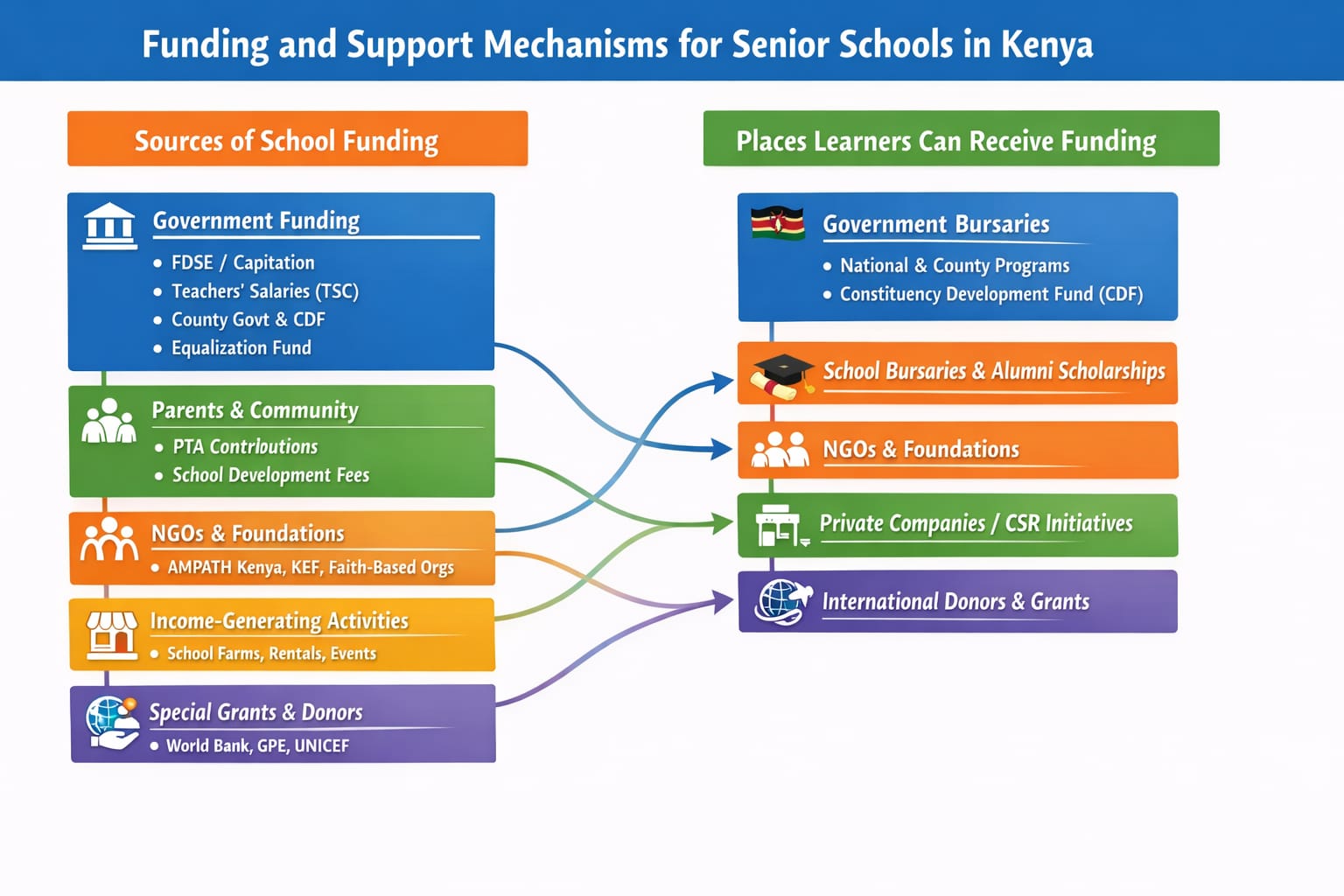Introduction
The educational landscape in Kenya is undergoing a significant transformation, driven by the rapid integration of technology into learning systems. As the country grapples with various educational challenges, the adoption of technological innovations offers promising solutions that could enhance accessibility, engagement, and overall learning outcomes. This article delves into how technology is reshaping education in Kenya, examining current innovations, successful case studies, challenges faced, and future prospects.
Current Technological Innovations in Kenyan Education
Mobile Learning Platforms
Mobile technology has emerged as one of the most accessible means of delivering education across Kenya. With the proliferation of smartphones and mobile internet, various mobile learning platforms have been developed to cater to students at different education levels. Applications like M-Shule provide personalized learning experiences, leveraging SMS and mobile internet to deliver educational content and quizzes directly to learners’ phones. These platforms not only enhance engagement but also allow for flexibility in learning, making education more adaptable to the needs of students.
Moreover, mobile learning platforms have been critical in reaching marginalized populations, particularly in rural areas, where traditional educational resources may be lacking. By utilizing existing mobile infrastructure, these platforms bypass some of the barriers that hinder conventional educational models, ensuring a more inclusive approach to learning.
E-Learning and Online Resources
The rise of e-learning has revolutionized how education is delivered in Kenya. Online platforms like Kenya’s National Open University and various MOOCs (Massive Open Online Courses) provide opportunities for both students and professionals to advance their knowledge and skills. These platforms host a range of courses from basic literacy to specialized training in fields such as engineering and business management.
Incorporating online resources into classrooms has also become a priority, with many schools adopting blended learning models that combine face-to-face instruction with online components. This approach not only makes learning more interactive but also prepares students for the digital world they will encounter in their future careers.
Interactive Learning Tools
Interactive learning tools such as educational games, simulations, and virtual labs are becoming increasingly prevalent in Kenyan classrooms. These tools foster an engaging and dynamic learning environment, enabling students to grasp complex concepts through hands-on experiences. For example, platforms that simulate scientific experiments allow students to explore scientific principles without the constraints of physical laboratory resources.
Additionally, interactive whiteboards and digital projectors are being integrated into classrooms, enhancing the teaching process through visual and audio elements. This technology not only supports diverse learning styles but also encourages collaborative learning among students, thereby improving their communication and teamwork skills.
Case Studies of Successful Technological Implementations
Example 1: Mobile Apps in Primary Education
The success of mobile applications in primary education is exemplified by the use of platforms like ‘Kidogo’ and ‘Kio Kit’. These platforms provide learning materials adapted to the Kenyan curriculum, enabling young learners to engage with educational content in an interactive manner. Research indicates that students using these applications show improved performance in literacy and numeracy, highlighting the potential of mobile technology in early education.
Schools that have adopted these mobile apps report increased student motivation and participation. Teachers can monitor progress and tailor instruction to meet individual student needs, thus personalizing the learning experience more effectively than traditional methods.
Example 2: Virtual Classrooms in Secondary Schools
Virtual classrooms have been particularly transformative for secondary education in Kenya. During the COVID-19 pandemic, many schools turned to platforms like Zoom and Google Classroom to continue educational activities while adhering to social distancing guidelines. Case studies show that schools that implemented these technologies were able to maintain learning continuity and even enhance student engagement through interactive online discussions and collaborative projects.
Moreover, the use of virtual classrooms has facilitated access to quality education resources and expert instructors, allowing students in remote areas to participate in specialized subjects that may not be available locally. This shift has resulted in a broader scope of learning opportunities for students nationwide.
Example 3: University Innovations and Research
Kenyan universities are at the forefront of technological innovation in education. Institutions like the University of Nairobi have integrated e-learning systems that allow students to access lectures, resources, and assessments online. This approach not only accommodates diverse learning styles but also prepares students for a globalized workforce where digital skills are paramount.
Additionally, universities are leveraging technology for research purposes, collaborating with tech firms to develop solutions to local challenges. Such partnerships not only enhance the educational experience but also contribute to community development, as research findings are often disseminated to solve real-world problems.
Challenges Faced in Technological Adoption
Infrastructure Limitations
Despite the promising advancements in educational technology, numerous challenges hinder widespread adoption in Kenya. One significant obstacle is the lack of adequate infrastructure, particularly in rural areas. Many schools still lack reliable electricity and internet connectivity, which are essential for the effective use of technological tools. Without these foundational elements, the integration of technology into education remains sporadic and often ineffective.
Additionally, the digital divide between urban and rural areas exacerbates educational inequalities. While urban schools may enjoy access to advanced technology, rural institutions often struggle with basic resources, creating a significant gap in educational opportunities.
Digital Literacy Gaps
Another challenge is the digital literacy gap among both students and educators. While students may be familiar with using smartphones and social media, many lack the skills necessary to navigate educational technology effectively. Educators often require additional training to integrate technology into their teaching practices fully. This lack of proficiency can lead to resistance to adopting new tools and methods, ultimately hindering the potential benefits of technology in education.
Efforts to enhance digital literacy must be prioritized, ensuring that both teachers and students are equipped with the skills necessary to thrive in a technology-driven educational landscape.
The Role of Government and Private Sector
Policy Frameworks Supporting Technology in Education
The Kenyan government plays a crucial role in fostering an environment conducive to the integration of technology in education. Various policy frameworks have been established to support this initiative, including the Kenya Vision 2030 and the National ICT Policy. These policies emphasize the importance of technology in enhancing educational quality and access, aiming to create a digitally literate population.
Furthermore, the government has initiated various programs, such as the Digital Literacy Programme (DLP), which aims to provide primary school students with access to ICT resources and training. Such initiatives are vital for ensuring that the benefits of technology are evenly distributed across the educational spectrum.
Public-Private Partnerships in Educational Technology
Collaboration between the government and the private sector has proven effective in driving technological advancements in education. Public-private partnerships (PPPs) enable the pooling of resources and expertise, facilitating innovative educational solutions that address local needs. For instance, tech companies have introduced affordable digital learning tools, while educational institutions provide the necessary frameworks for implementation.
These partnerships not only enhance resource allocation but also ensure the sustainability of technological initiatives in education. By working together, stakeholders can create impactful programs that improve learning outcomes across the country.
Future Prospects of Technology in Kenyan Education
Trends to Watch in Educational Technology
The future of educational technology in Kenya is promising, with several trends poised to influence the learning landscape. One significant trend is the increasing use of Artificial Intelligence (AI) and data analytics in education. These technologies can personalize learning experiences, allowing educators to analyze student performance data and tailor instruction to meet individual needs effectively.
Moreover, the implementation of blended learning models, combining traditional and online methods, is expected to gain traction. This hybrid approach not only enhances flexibility but also allows for more comprehensive student engagement through diverse learning modalities.
Potential Impact on Learning Outcomes
As technology continues to integrate into the educational fabric of Kenya, the potential impact on learning outcomes is substantial. Improved access to resources, enhanced engagement through interactive tools, and personalized learning experiences can lead to higher academic performance and better preparedness for future challenges.
Furthermore, the collaborative nature of technology fosters a culture of innovation and critical thinking among students, essential skills for success in the modern workforce. The long-term benefits of these advancements could significantly elevate the quality of education in Kenya, ultimately contributing to national development goals.
Conclusion
Summary of Key Insights
The integration of technology in education is reshaping the educational landscape in Kenya. Current innovations such as mobile learning platforms, e-learning resources, and interactive tools are enhancing accessibility and engagement. Case studies highlight successful implementations across various educational levels, demonstrating the potential for technology to transform learning experiences.
However, challenges such as infrastructure limitations and digital literacy gaps remain significant hurdles. The role of government and private sector partnerships is crucial in overcoming these barriers and fostering a sustainable technological environment in education. Looking ahead, emerging trends such as AI and blended learning promise to further enhance educational outcomes, paving the way for a better-educated and more digitally literate population.
FAQs
What are some examples of technology used in Kenyan education?
Some examples include mobile learning apps like M-Shule, e-learning platforms such as Google Classroom, and interactive tools like virtual labs and educational games.
How has the COVID-19 pandemic affected education technology in Kenya?
The pandemic accelerated the adoption of online learning platforms and virtual classrooms, allowing schools to maintain educational continuity during lockdowns.
What challenges does Kenya face in adopting educational technology?
Challenges include inadequate infrastructure, digital literacy gaps among students and teachers, and disparities in access between urban and rural areas.
What role does the government play in technology integration in education?
The government establishes policies and initiatives, such as the Digital Literacy Programme, to promote and support technology integration in the education sector.
What is the future of technology in Kenyan education?
The future is likely to involve greater use of AI, blended learning approaches, and enhanced collaboration between educational institutions and technology companies.






